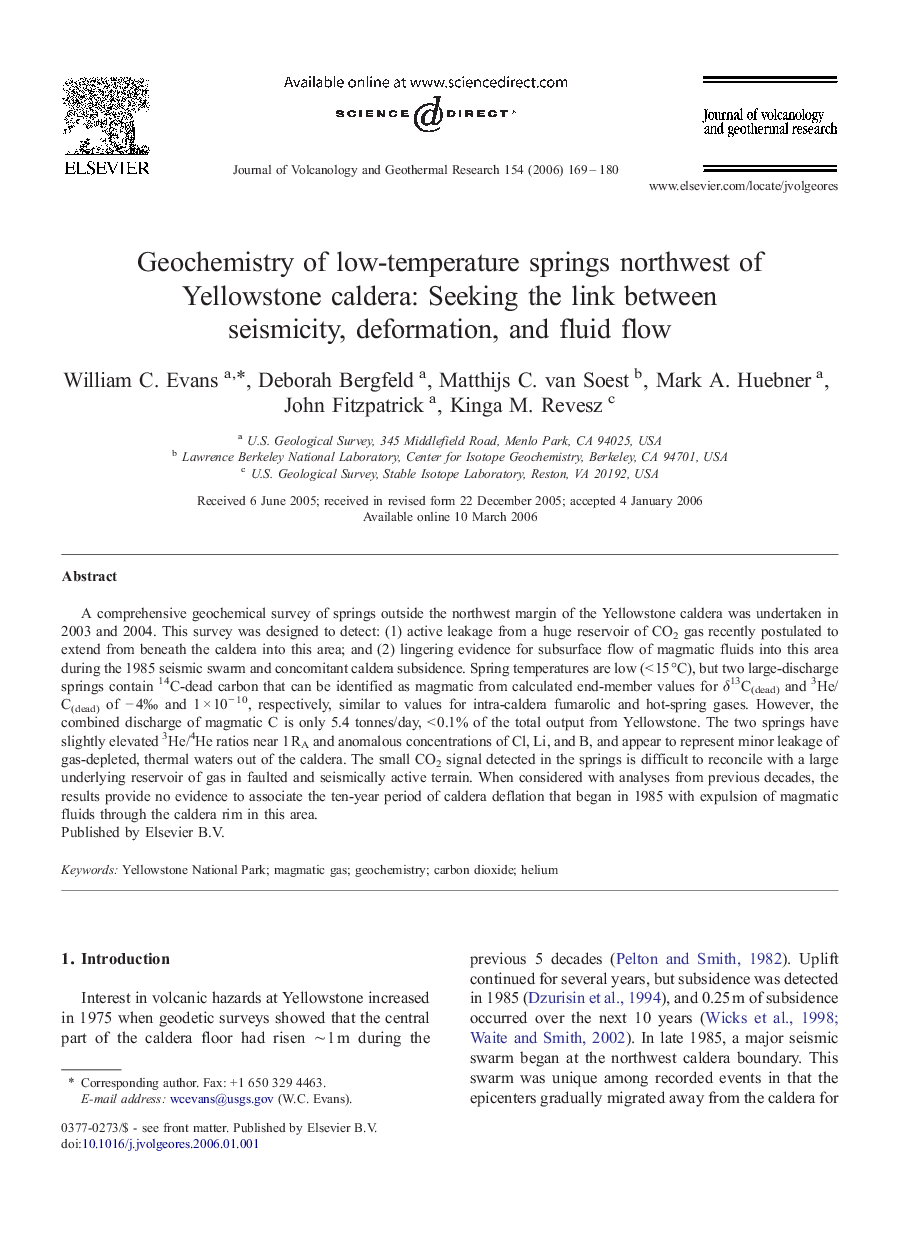| Article ID | Journal | Published Year | Pages | File Type |
|---|---|---|---|---|
| 4715056 | Journal of Volcanology and Geothermal Research | 2006 | 12 Pages |
A comprehensive geochemical survey of springs outside the northwest margin of the Yellowstone caldera was undertaken in 2003 and 2004. This survey was designed to detect: (1) active leakage from a huge reservoir of CO2 gas recently postulated to extend from beneath the caldera into this area; and (2) lingering evidence for subsurface flow of magmatic fluids into this area during the 1985 seismic swarm and concomitant caldera subsidence. Spring temperatures are low (< 15 °C), but two large-discharge springs contain 14C-dead carbon that can be identified as magmatic from calculated end-member values for δ13C(dead) and 3He/C(dead) of − 4‰ and 1 × 10− 10, respectively, similar to values for intra-caldera fumarolic and hot-spring gases. However, the combined discharge of magmatic C is only 5.4 tonnes/day, < 0.1% of the total output from Yellowstone. The two springs have slightly elevated 3He/4He ratios near 1 RA and anomalous concentrations of Cl, Li, and B, and appear to represent minor leakage of gas-depleted, thermal waters out of the caldera. The small CO2 signal detected in the springs is difficult to reconcile with a large underlying reservoir of gas in faulted and seismically active terrain. When considered with analyses from previous decades, the results provide no evidence to associate the ten-year period of caldera deflation that began in 1985 with expulsion of magmatic fluids through the caldera rim in this area.
